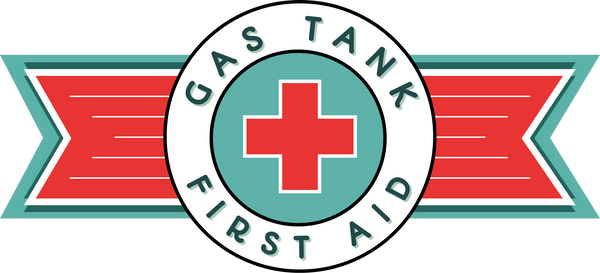Here we will show you our process of stripping a motorcycle gas tank. We will go over the complete process step by step so you have a better understanding of what's involved before making a purchase as well as answering any questions or concerns you may have. Let's begin.
First, before unpacking the gas tank. We begin by inspecting the shipping box. Checking for any obvious signs of shipping damage that may have occurred. We will take pictures of the box as it was received before opening it.
Next, we will upack the gas tank. Thoroughly look over the gas tank and inspect its condition. Again checking for any damage that may have occurred during shipping. We will notify the customer that we have received the gas tank and the condition we received it in. If any shipping damage has occurred. We can assist the customer with pictures to help file their claim with the shipping carrier.
Next, we are going to take pictures of the gas tank before any work is performed. Once pictures are taken. We will disassemble and remove any fittings, plugs, petcock valve and or fuel cap. Gas tank will be placed in our stripping tank for 15 minutes. This will quickly remove and paint, powder coat and body filler.
After 15 minutes in the stripping tank. The gas tank will be removed. Rinsed off with water and placed in one of our wet blasting cabinets. We have three wet blasting cabinets. Each cabinet has a different media providing different finishes. One cabinet is 160 grit aluminum oxide, another with 220 grit aluminum oxide and one with 220 round ceramic beads. Since this gas tank is going to be painted.
We are going to use either of the aluminum oxide cabinets which both provide a dull finish. We do not want to use the ceramic beads and want to polish the outside surface of the gas tank.
Here is the gas tank after being wet blasted. Wet blasting, also known as vapor honing, does an excellent job of cleaning the surface and removing any rust. Far superior to sanding it by hand or wire brush.
After the gas tank has been wet blasted. The gas tank is rinsed out and dried. Once dried, we apply a rust preventative to the exterior.
If you provide a fuel petcock valve and fuel cap with your gas tank. We will wet blast them at no additional charge. For these two parts we are going to use our 220 ceramic bead cabinet.
Here's the fuel petcock valve and fuel cap after being wet basted with ceramic beads. The finish speaks for itself. You can see more before and after photos of jobs we did on our instagram page. Thanks for reading. Let us know if you have any questions.

